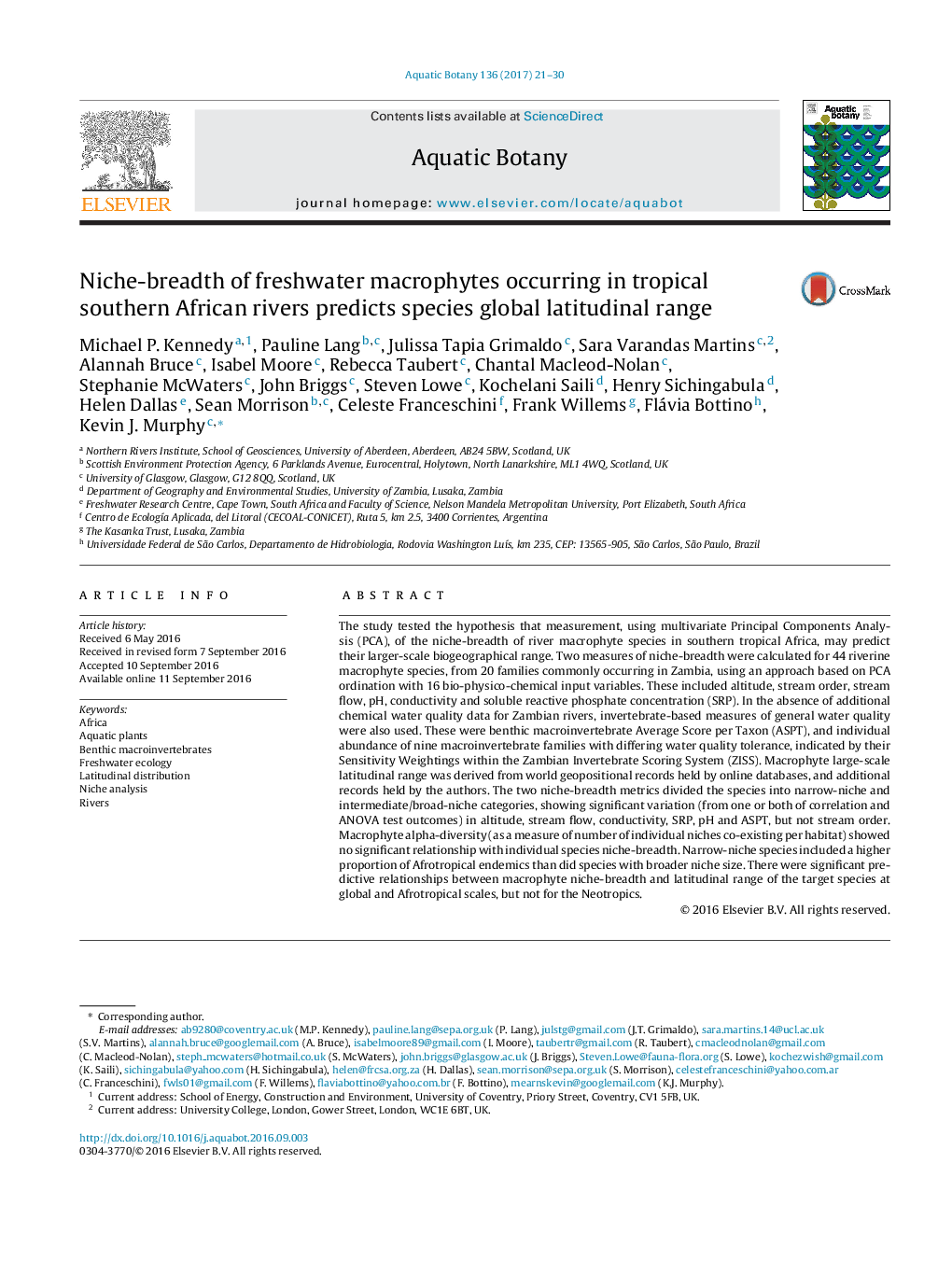| کد مقاله | کد نشریه | سال انتشار | مقاله انگلیسی | نسخه تمام متن |
|---|---|---|---|---|
| 4527516 | 1625806 | 2017 | 10 صفحه PDF | دانلود رایگان |
• Two measures of niche-breadth were calculated for 44 Zambian macrophyte species.
• Species were divided into narrow- and intermediate/broad-niche categories.
• These showed significant variation in 6 bio-physico-chemical variables.
• Narrow-niche species included a high proportion of Afrotropical endemics.
• Niche-breadth predicted species latitudinal range at global and Afrotropical scales.
The study tested the hypothesis that measurement, using multivariate Principal Components Analysis (PCA), of the niche-breadth of river macrophyte species in southern tropical Africa, may predict their larger-scale biogeographical range. Two measures of niche-breadth were calculated for 44 riverine macrophyte species, from 20 families commonly occurring in Zambia, using an approach based on PCA ordination with 16 bio-physico-chemical input variables. These included altitude, stream order, stream flow, pH, conductivity and soluble reactive phosphate concentration (SRP). In the absence of additional chemical water quality data for Zambian rivers, invertebrate-based measures of general water quality were also used. These were benthic macroinvertebrate Average Score per Taxon (ASPT), and individual abundance of nine macroinvertebrate families with differing water quality tolerance, indicated by their Sensitivity Weightings within the Zambian Invertebrate Scoring System (ZISS). Macrophyte large-scale latitudinal range was derived from world geopositional records held by online databases, and additional records held by the authors. The two niche-breadth metrics divided the species into narrow-niche and intermediate/broad-niche categories, showing significant variation (from one or both of correlation and ANOVA test outcomes) in altitude, stream flow, conductivity, SRP, pH and ASPT, but not stream order. Macrophyte alpha-diversity (as a measure of number of individual niches co-existing per habitat) showed no significant relationship with individual species niche-breadth. Narrow-niche species included a higher proportion of Afrotropical endemics than did species with broader niche size. There were significant predictive relationships between macrophyte niche-breadth and latitudinal range of the target species at global and Afrotropical scales, but not for the Neotropics.
Journal: Aquatic Botany - Volume 136, January 2017, Pages 21–30
